THE STAFFORDSHIRE YEOMANRY
SUMMER CAMPS 1909 - 1914
These photos have been kindly provided by Andrew Thornton. Andrew is currently
doing research into the 6th Battalion, The South Staffordshire Regiment, 3rd
North Midland Field Ambulance (based at Stafford Street), and the batteries of
3rd North Midland Field Brigade, Royal Field Artillery (based at West Park) for
an MPhil thesis at Birmingham University on the Territorial Force in
Staffordshire.
If anyone has any family reminiscences, photos, documents or whatever, would
they please contact Andrew Thornton, at 29 Foxes Rake, Cannock, Staffs, WS11 2UD
or tel: 01543 572784.
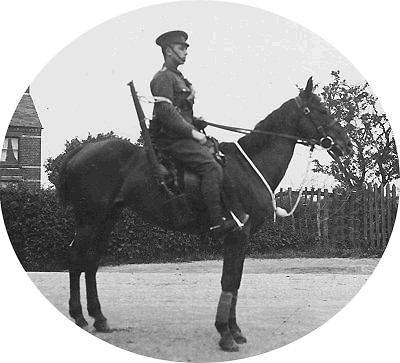
Private Sid Wade, later Farrier Sergeant Sid Wade, who collected most of
these photographs. Sid was in 'D' Squadron (which was based in Wolverhampton
with a drill station at Himley) of the Staffordshire Yeomanry (Queen's Own Royal
Regiment. It is this Regiment (and usually this Squad) who appear in these
photos.
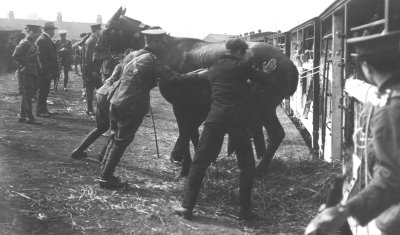 |
The Annual Summer Camp was quite a logistic
exercise. Here horses are being entrained for Croxton Camp
(Leicestershire) in 1910. |
| Watering the horses at Croxton Camp, 1910. |
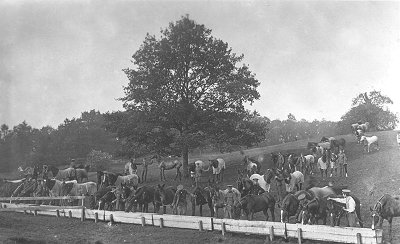 |
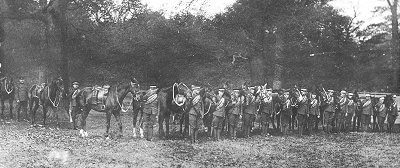 |
A training exercise at Trentham Camp, 1909. The
white bands on their forage caps show that these men are playing
the enemy in this exercise. |
| The officers attend a briefing at a cross roads
during the Keele Park camp, 1911. For these men the activity was
not too much unlike riding to hounds. Officers often provided
their own horses. |
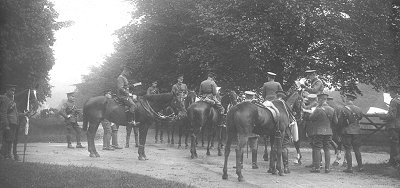 |
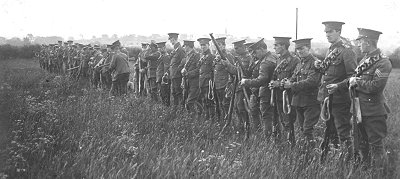 |
Some of the men at Towcester Camp, 1913. There was
one more camp, at Patshull Park, in 1914 (though there seem to
be no photos of it). It would not be long before these men would
be in foreign fields. |
| A break during an exercise at Croxton Camp, 1910. |
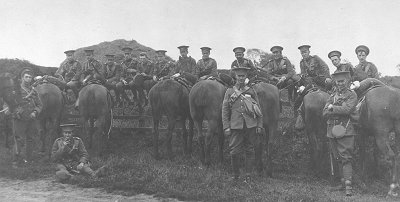 |
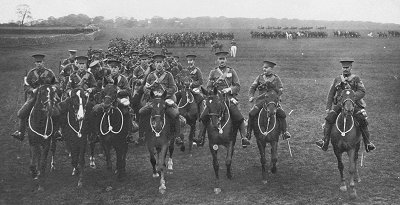 |
Croxton Camp 1910. Today we would find this number
of horses incredible. Then horses were not just used for racing
and hunting but for everyday transport, hauling carriages and
omnibuses and for almost every bit of farm work; and the Army
had them in large numbers. During the First World War large
numbers of horses were requisitioned for war service. |
But the demands of war lead to rapid developments in cars,
motorbikes, lorries and planes; and many men learnt to drive, and even
fly, in the Army. After the war those men and the new machines provided
services that saw the end of the horse as the ubiquitous motive power.
| Church Parade at Keele Park, 1911. The Band of the
5th North Staffs has been drafted in to provide the
accompaniment. |
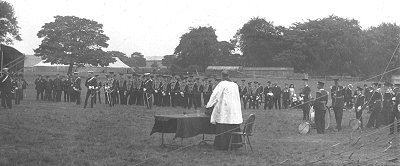 |
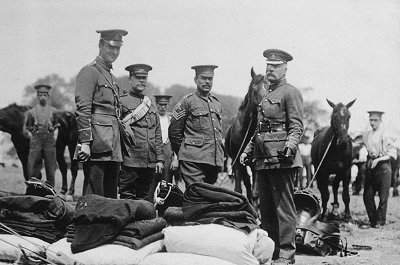 |
It looks like a kit inspection, though the kit
seems a bit untidy. This is Croxton Camp, 1910. The young
officer on the left is Lieutenant C. A. Mander; on the right,
with moustache and monocle, is his father, Lieutenant-Colonel C.
T. Mander. It was common for the now-patrician industrialists of
Wolverhampton to take a commission in the Staffordshire
Yeomanry. The amazing Colonel Thorneycroft of Tettenhall Towers
is one of the best known of them. |
| Officers at Croxton Camp. In the background one
can just make out men in suits and a lady with a parasol. It was
probably an "open day" at the camp when the Regiment displayed
its prowess to visitors. |
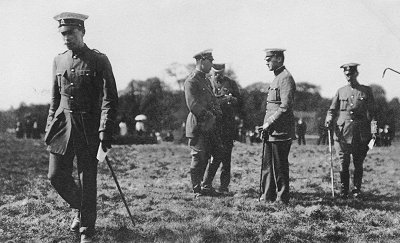 |
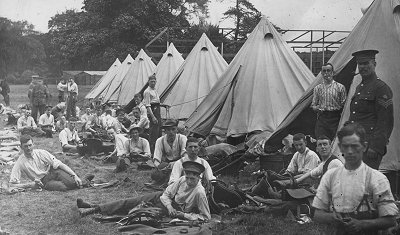 |
Relaxing at Keele Park camp in 1911. The man in the
flap of the bell tent on the right is half way through shaving. |
| Barton-under-Needwood Camp, 1912. Third from the
left at the back is Lt. Mander. Everyone is from D Squadron and
they would all be from Wolverhampton. For most of these men the
summer camp was the nearest thing they would get to a summer
holiday. |
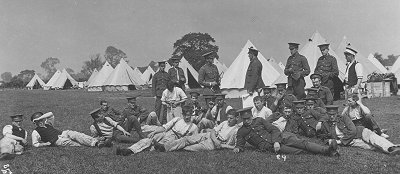 |
 |
Return to the
previous page |
|













